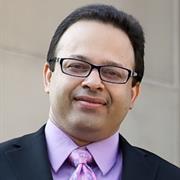The University of Alabama at Birmingham (UAB) has signed a Memorandum of Understanding (MOU) with two medical institutions in India–the Pravara Institute of Medical Sciences University (PIMS-DU; Loni, Maharashtra) and Bharati Vidyapeeth Deemed to be University Medical College (BVDU; Pune, Maharashtra).
The MOU aims to develop a mutually beneficial collaborative framework between UAB and the institutes, while helping faculty and students exchange knowledge and gain international experience. Additionally, the MOU will also help the communities through various training and research projects. Ashutosh Tamhane, M.D., Ph.D.“Both of these institutes serve large populations from distinct demographics and have a wealth of health care data,” said Ashutosh Tamhane, M.D., Ph.D., assistant professor in the UAB Division of Nephrology. “As collaboration progresses, one of the additional goals is to leverage these data to provide an excellent addition to clinical trials and medical research.”
Ashutosh Tamhane, M.D., Ph.D.“Both of these institutes serve large populations from distinct demographics and have a wealth of health care data,” said Ashutosh Tamhane, M.D., Ph.D., assistant professor in the UAB Division of Nephrology. “As collaboration progresses, one of the additional goals is to leverage these data to provide an excellent addition to clinical trials and medical research.”
Tamhane was introduced to PIMS-DU medical faculty through an existing collaboration between the institute and the UAB Department of Mechanical Engineering. Subsequently, he was introduced to the dean of Bharati Vidyapeeth Deemed to be University Medical College through a mutual collaborator, which led to Tamhane attending an annual conference and meeting additional faculty. The two relationships led to the signing of this MOU between the two institutes and UAB.
“This MOU would not have been possible without the support of Dr. Anupam Agarwal, dean of the Heersink School of Medicine, and Dr. Alan Tita, director of the Mary Heersink Institute for Global Health,” said Tamhane. “I also must mention Penny Whiteside, also with the Institute of Global Health, who guided me through every step of the process to bring this MOU to fruition.”
Tamhane is currently leading and coordinating the effort to expand this collaboration, while being supported by other UAB faculty and the Mary Heersink Institute of Global Health. He has visited both institutes and held epidemiology and biostatistics related workshops for students, staff, and faculty. Additionally, multiple Zoom lectures and meetings have also already taken place, showcasing the excitement surrounding this partnership.
“The global health care needs are rapidly evolving especially with artificial intelligence and after COVID,” said Tamhane. “There is a growing emphasis on global health and the need for medical professionals collaborating with each other to address international health challenges. This was evident during COVID pandemic, and we need to be prepared for such challenges in future.”
Tamhane also stated that the MOU could also address disparities in health care access and quality by promoting accessible medical education and health consultation. Specifically, UAB’s innovation in telemedicine could prove to be incredibly beneficial in the collaboration, helping with the accessibility of health care in communities in India.
Since its establishment in 2003, PIMSU has become a distinctive alternative to traditional medical and health care programs by promoting internationalization, fostering innovation in academic research, and supporting the sustainable development of rural and tribal regions in Maharashtra.
Similarly, BVDU, which is one of the oldest and most progressive medical colleges in Pune (Maharashtra) aims to train physicians to meet the health care delivery needs of society and accomplish social transformation through dynamic education.
Both the new UAB collaborators prioritize addressing local and global health care needs, a mission that the UAB Marnix E. Heersink School of Medicine also focuses on. With a similar approach to placing importance on research, education, and training future physicians, the partnerships between UAB, PIMSU, and BVDU will be extremely impactful to global health needs and the education of future medical leaders.
“As a part of this collaboration, multiple students from BVDU have already attended UAB’s prestigious International Visiting Medical Student program through the International Medical Education,” said Tamhane. “Reciprocally, we are looking into whether our medical students can also visit these institutes for externship/fellowship. As these institutes already have such programs in place, it should come into fruition soon.”
With an interest from UAB faculty in various departments, Tamhane and the team are planning visits to the institutes in the near future. Furthermore, the team is envisioning collaborative training and research projects to come.
When asked what he looks forward to the most with these new collaborations, Tamhane said, “Both the institutes have/will been/be given the status of ‘deemed university’ by the Government of India, indicating their high academic standards, research contributions, and overall institutional performance. Similarly, UAB is one of the premier institutes in the U.S. with high standards. We are looking to develop joint training and research projects, resource sharing, clinical training programs, faculty and student exchange, and public health initiatives.”
“By working together, we aim to contribute to the advancement of medical education, research, and clinical practice ultimately benefiting the community.”